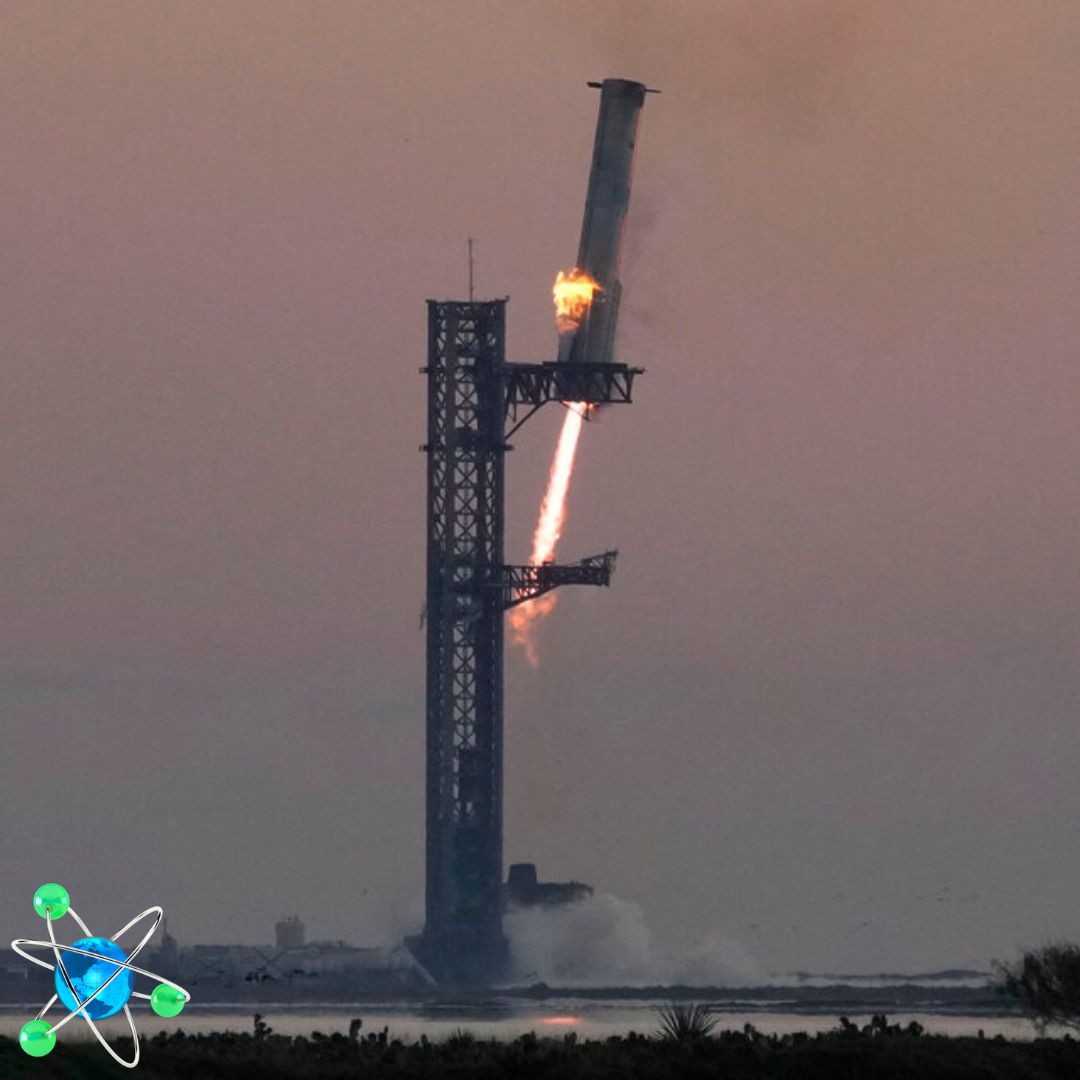
- SpaceX successfully launched its Super Heavy-Starship rocket, showcasing a groundbreaking feat by capturing the massive first stage booster mid-air using mechanical “mechazilla” arms, advancing their goal of full rocket reusability.
- The Starship upper stage completed an orbit around Earth and successfully re-entered the atmosphere, enduring extreme heat with upgraded heat shields and fins, demonstrating its resilience for future missions.
- This test flight represents a key step in SpaceX’s plans to develop reusable rockets for long-term space exploration, including NASA’s Artemis lunar missions, and highlights the tension between rapid innovation and regulatory oversight.
In a groundbreaking feat of engineering, SpaceX successfully launched its enormous Super Heavy-Starship rocket on an uncrewed test flight Sunday, marking a major milestone in the company’s ambitious drive toward fully reusable space vehicles. In a remarkable first, the flight demonstrated the capture of the Super Heavy booster stage using giant mechanical arms—nicknamed “mechazilla”—at the launch pad, further showcasing SpaceX’s ingenuity and relentless pursuit of innovation.
The two-stage Starship system is the most powerful rocket ever built, designed to revolutionize space travel by enabling rapid reusability. After liftoff from SpaceX’s Boca Chica facility in Texas at 8:25 a.m. EDT, the rocket’s first stage—called Super Heavy—completed its primary mission of propelling the upper-stage Starship toward orbit. The momentous test then shifted to the challenge of recovering the massive booster. Rather than landing on a pad or droneship, as SpaceX does with its Falcon 9 boosters, the Super Heavy was guided back to its launch pad, where the mechazilla arms captured it in midair as its engines powered down—a jaw-dropping engineering achievement.
This successful booster capture is pivotal to SpaceX’s long-term goal of achieving fully reusable rockets. Unlike traditional space programs that rely on expendable boosters, SpaceX aims to develop a system where rockets can be quickly recovered, refurbished, refueled, and launched again in rapid succession. Elon Musk, SpaceX’s founder and CEO, hailed the event as a “big step towards making life multiplanetary,” further underscoring his vision of routine space travel and human colonization of the Moon, Mars, and beyond.
As the Super Heavy returned to its launch site, the Starship upper stage continued its journey, ultimately looping around Earth before re-entering the atmosphere and splashing down in the Indian Ocean. The Starship endured temperatures as high as 3,000 degrees Fahrenheit during re-entry, protected by upgraded heat-shield tiles and enhanced steering fins. These upgrades were critical after the previous test flight in June, which saw significant damage to the spacecraft during re-entry. This time, the heat-shield improvements worked as expected, allowing Starship to survive the fiery descent in relatively good condition.
The Super Heavy-Starship rocket stands 397 feet tall and generates nearly 16 million pounds of thrust—twice the power of NASA’s iconic Saturn V, the rocket that took astronauts to the Moon. The Super Heavy first stage is powered by 33 Raptor engines fueled by liquid methane and oxygen, while the Starship upper stage is equipped with six Raptors and can carry 2.6 million pounds of propellant. Both stages are designed to be fully reusable, a fundamental concept that SpaceX is relentlessly pursuing to cut the costs of space exploration.
Sunday’s test marks the fifth flight of the Super Heavy-Starship system and represents significant progress toward achieving SpaceX’s vision of reusable spacecraft. The primary objective was to demonstrate the ability to capture the booster stage on the launch pad, a technique that, if perfected, could drastically speed up turnaround times between flights. While SpaceX has mastered booster landings with its smaller Falcon 9 rockets, catching the much larger Super Heavy with mechanical arms had never been attempted until now.
This breakthrough comes as SpaceX prepares for more complex missions, including its role in NASA’s Artemis program. Under contract with NASA, SpaceX will modify the Starship to serve as a lunar lander, capable of transporting astronauts from lunar orbit to the Moon’s surface. To make this possible, SpaceX must first launch the Starship into Earth orbit, refuel it with multiple Super Heavy-Starship “tanker” missions, and then send it on a course to the Moon. NASA’s plan includes launching astronauts aboard its Space Launch System rocket and transferring them to the Starship for their descent to the Moon.
Rapid reusability is a critical factor in SpaceX’s strategy for future lunar and Martian missions. The company envisions a fleet of Super Heavy-Starship rockets that can be quickly reused, drastically reducing costs and allowing for frequent space travel. However, while Sunday’s test was successful, many more flights are required to fine-tune the system and prove its reliability for crewed missions. SpaceX will continue to refine the rocket’s performance in upcoming tests, striving to achieve the level of safety and dependability needed for human spaceflight.
Elon Musk has expressed frustration with the regulatory process surrounding rocket launches, criticizing the Federal Aviation Administration (FAA) for delays in approving launch licenses. For Sunday’s flight, the FAA granted approval only the day before, though this license now covers multiple test flights with similar profiles. As SpaceX pushes the boundaries of space technology, the balance between regulatory oversight and innovation remains a point of tension.
With each successful flight, SpaceX inches closer to its long-term vision of a multiplanetary future. The stunning capture of the Super Heavy booster by mechazilla and the resilient performance of the Starship during re-entry signal that the age of fully reusable rockets is no longer just a dream—it’s becoming a reality.
